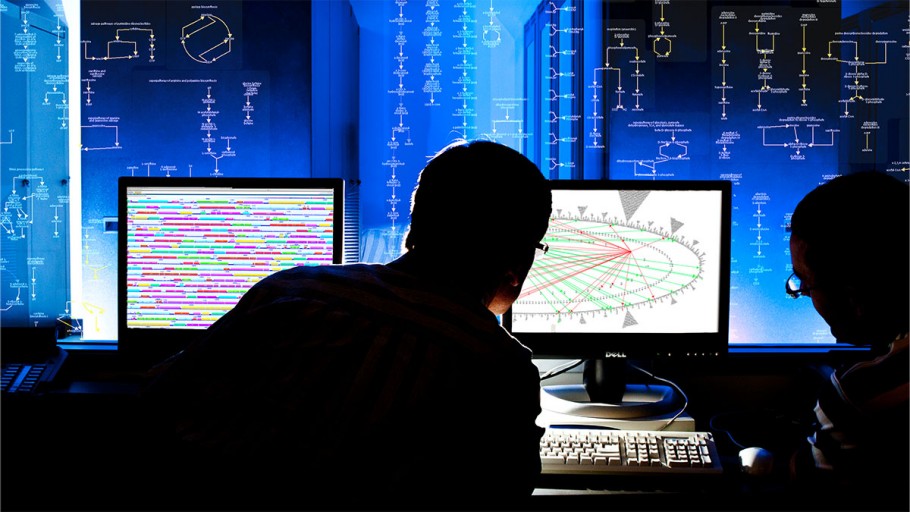A couple of months ago, I had a call from SRI International looking for hiring a photographer for their new website. SRI is a not-for-profit research center in Menlo Park, CA and they are responsible for some amazing inventions including the mouse, HDTV, and recently SIRI. SRI was building a new website to present the different research projects and they wanted to have one image per project. Each image had to encapsulate the vision and the goal of what the project was about. I was assigned to work with the Artificial Intelligence Center (the folks behind the first version of SIRI). Artificial Intelligence (AI) is not very sexy and visual (unless Apple does it). We started with a lot of back and forth between the project manager, the art director and myself on what was possible and what was too expensive and out of budget.
Let’s go through the concept for one of the image we created for the BioCyc Project. The Biocyc project provides a set of more than 1,700 Pathway/Genome Databases (PGDBs) describing many sequenced genomes (http://www.sri.com/work/projects/biocyc).
How do you make a visual picture representing a database, even more, a set of databases, and that they are related to the genome?
During the design phase we decided to use a datacenter in the background to represent the databases and multiples monitors in the foreground displaying some of the BioCyc tools. Here is the drawing of the concept for the shot:
Once we agreed on the concept, we went on location for test shots. We had decided to go with a blue mood for lighting the datacenter. I installed 3 blue-gelled Speedlites in the datacenter. Right there I encountered a problem: I was thinking on using the Pocket Wizards (TTL-1) to control the 3 flashes from where I was shooting as I had to shoot outside of the datacenter looking into it. Unfortunately, I learned that the wall and the glass between the datacenter and the computer room are lined with mesh to limit electronic interference. Guess what the Pocket Wizard RF system is? Electronic interference. I could not get the Pocket Wizards to trigger the flashes. Back to the basis, I used a 50ft long cable (from Syl Arena’s OCF) under the door to control the Speedlites. Simple, but it worked.

I got the datacenter lighted by several (3) speedlights (gelled blue) all controlled by OCF long cord to a master in the room. The OCR cable was going under the door into the datacenter.
We needed people in the shot to add dimension to the picture. I simulated the glow of the computer screens around the person’s head as the monitors would be turned off during the shot and covered with a white paper. This trick allows to add a picture on the monitors in post-production and not worrying about getting the correct exposure on the monitors for the shot. To accomplish that effect, I added one speedlite facing the camera on low power. Here is the picture showing that flash firing before we had a person in front of it:
We made a few tests with somebody in front of that flash as shown on the following picture:
Finally the art director and myself sat in front of the monitors and I shot the picture (yes I have the gift of ubiquity).

That’s the selected image that was the basis for adding the screen shots and the display of the genom.
The media department then used post-processing to finalize the image. The art director used the glass window that was separating the computer room from the datacenter to overlay genomes in photoshop and made the window look like a large HUD display. He also added the genome graphs on the monitors (and removed the paper sheets on the cabinet [the ones that looked like computer screens]).

The bioinformatic group at SRI International maintains several databases of organisms DNA and gene sequence.





